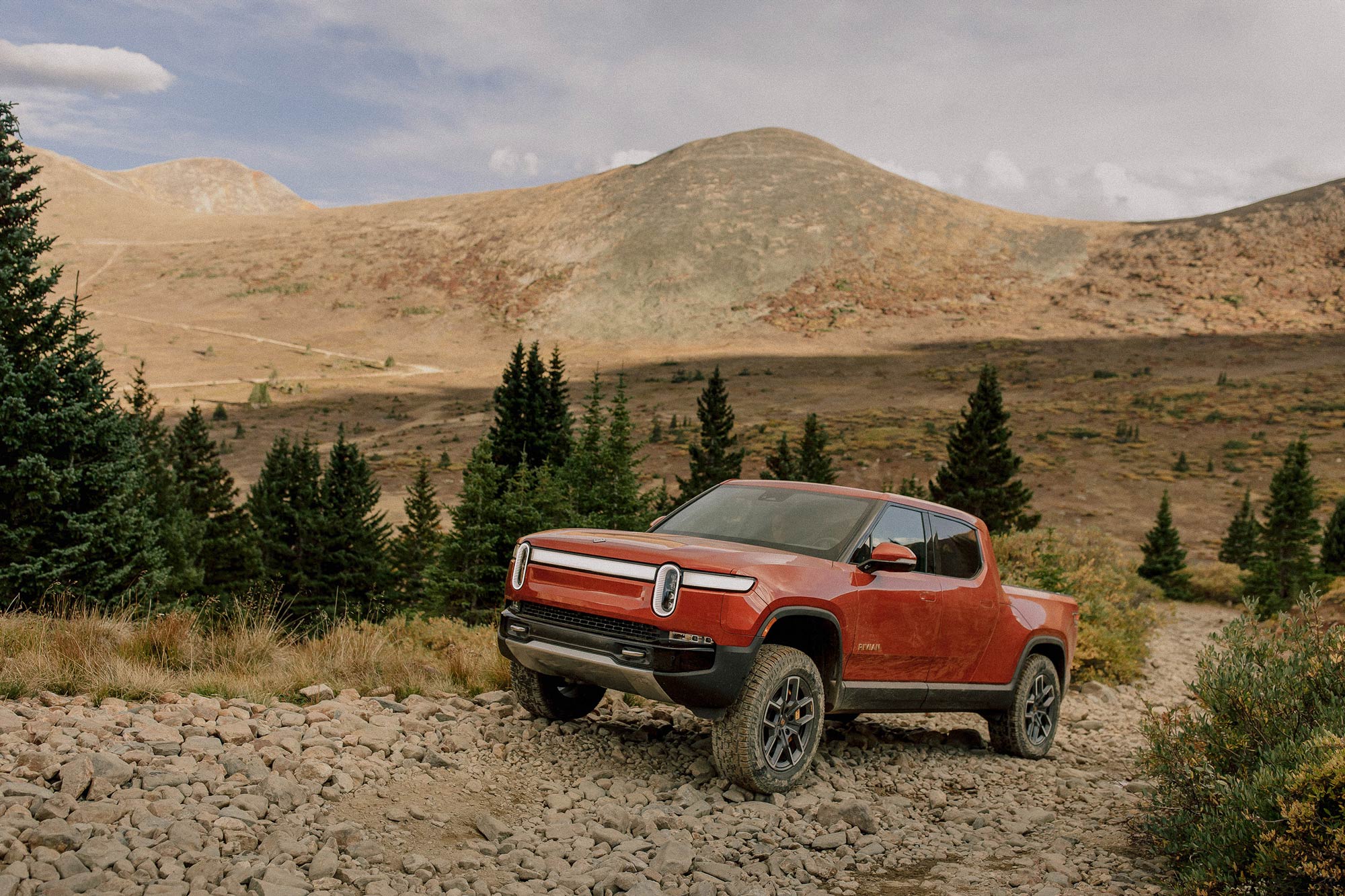What Is Through-the-Road AWD?
Electrification has opened the door to a new kind of all-wheel-drive system.
 Rivian
Rivian
In recent years, all-wheel drive has become a must-have for many consumers and a top selling point for automakers. According to automotive analytics company JATO Dynamics, more than half of new vehicles sold in 2020 were equipped with four- or all-wheel drive, up from 39.7% in 2016.
Although that data is from 2020, it's unlikely the trend will ebb any time soon. That's due in part to the proliferation of electric vehicles, which are relatively easy to equip with four drive wheels. Here's what you need to know about an EV's all-wheel-drive system, commonly referred to as through-the-road AWD.
How Does Traditional AWD Differ From Through-the-Road AWD?
- Traditional AWD: In the vast majority of four-wheel and all-wheel-drive cars powered by a combustion engine, there's a mechanical link (such as a driveshaft and/or transfer case) between the axles that allows engine torque to reach the front and rear wheels.
- Though-the-road AWD: In hybrids and EVs, however, using two (or more) electric motors requires no direct mechanical connection. This is what's known as through-the-road AWD, as the only link between the front and rear wheels is the road on which they roll.
Why Don't EVs Have a Mechanical AWD System?
Configuring an electric motor to spin the four wheels via driveshafts, like a combustion engine does, is technically possible but not as straightforward as a through-the-road layout. That's because, in most EVs, automakers situate the battery pack under the passenger compartment, which keeps the vehicle's center of gravity low, reduces drag, and leaves the cargo space mostly intact.
Using a driveshaft to link a front-mounted electric motor to a rear axle would require integrating a tunnel into the battery, which would reduce its capacity; routing the driveshaft above the battery, which would reduce interior space; or routing the driveshaft below the battery, which would reduce ground clearance.
Engineers can avoid this by packaging a compact electric motor and a transmission into a unit and placing one of those bundles on each axle. This way, the horsepower and the torque remain on the axle where they're generated.
Another option is designing independent drive units, which allows an automaker to put an electric motor at each wheel, resulting in fewer moving parts. For efficiency reasons, some companies such as Hyundai have developed a part-time through-the-road AWD system, wherein the front-mounted motor disengages when it's not needed. This reportedly improves driving range by 6% to 8%.
 Lamborghini
Lamborghini
Through-the-road AWD works in hybrid models as well. In the Lamborghini Revuelto, the mid-mounted 6.5-liter V12 engine spins the rear wheels via an eight-speed automatic transmission while each front wheel is assigned its own electric motor. The tunnel between the seats houses a small battery pack instead of a driveshaft.
What Are the Advantages of Through-the-Road AWD?
By and large, the benefits of through-the-road AWD are the same as with a mechanical AWD system. One big benefit is additional traction. And removing the mechanical connection between the axles unlocks other advantages. An electric motor can be controlled more precisely than a gasoline- or diesel-powered engine, so the system keeps a car moving in off-road and slippery driving conditions by quickly applying torque where it's needed.
In EVs equipped with four motors, such as high-end versions of Rivian's R1T and R1S, software controls the torque developed by each individual motor. Moreover, torque vectoring — wherein software can slow down or accelerate certain wheels to help the vehicle gain traction or corner better — is relatively easy to set up and control via a through-the-road AWD system.
Written by humans.
Edited by humans.
 Ronan Glon
Ronan GlonRonan Glon is an American journalist and automotive historian based in France. He enjoys working on old cars and spending time outdoors seeking out his next project car.
Related articles
View more related articles